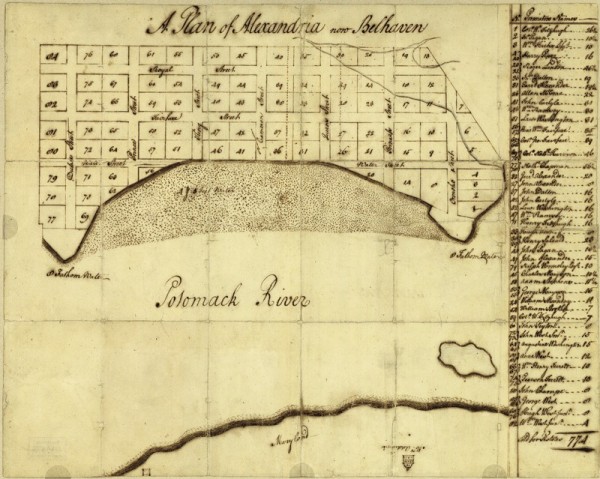
George A. Washington (1732–1799), A Plan of Alexandria now Belhaven [oriented with north to the right], [1749]. Pen and ink on paper. 14 13/16 x 17 15/16". (Library of Congress, Geography and Map Division.)
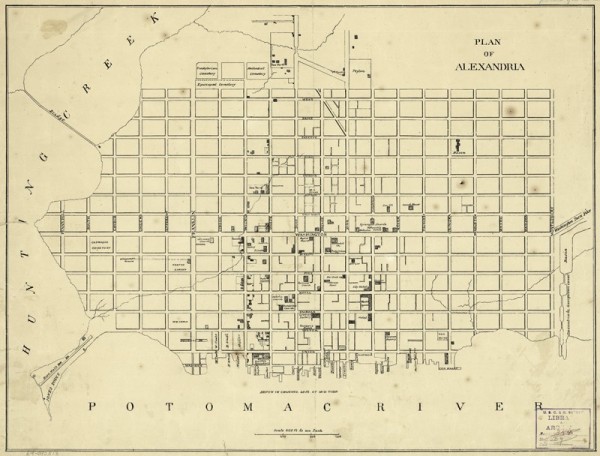
United States Coast Survey, Plan of Alexandria [oriented with north to the right], [1862]. 16 1/8 x 21 1/4". (Library of Congress, Geography and Map Division.)
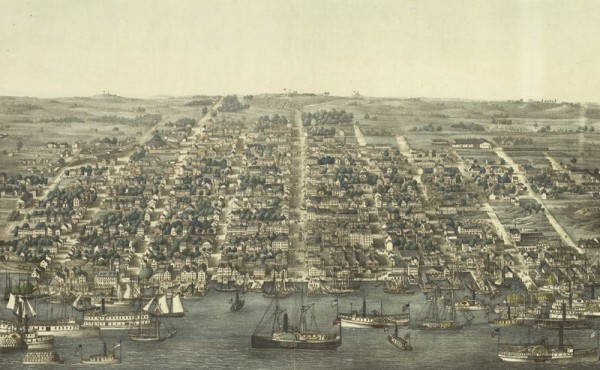
Charles Magnus, Birds Eye View of Alexandria, Va., [1863]. 14 3/16 x 23 1/4". (Library of Congress.)
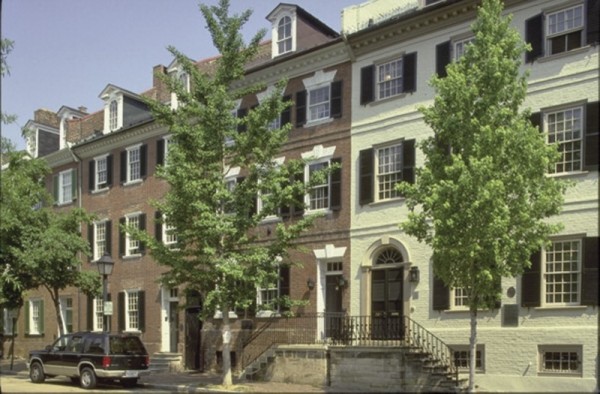
Modern-day street scene, Alexandria, Virgina, 2001. (Courtesy, Office of Historic Alexandria; photo, Eric Kvalsvik.)
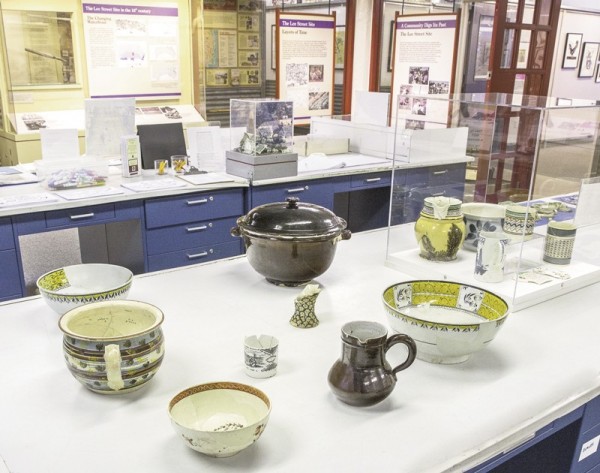
A selection of the ceramics illustrated in this article on a table in the Alexandria Archaeology Museum, 2017. (Photo, Robert Hunter.)
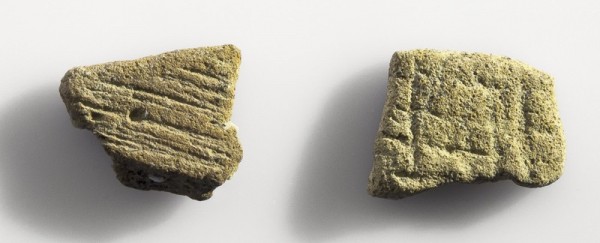
Native American pottery fragments, Early Woodland period, ca. 900–300 B.C. Low-fired earthenware. (Courtesy, Alexandria Archaeology Museum; photo, Robert Hunter.) These very small fragments are typical of prehistoric pottery found in Alexandria excavations. This type of pottery is known as cord-marked Accokeek ware.
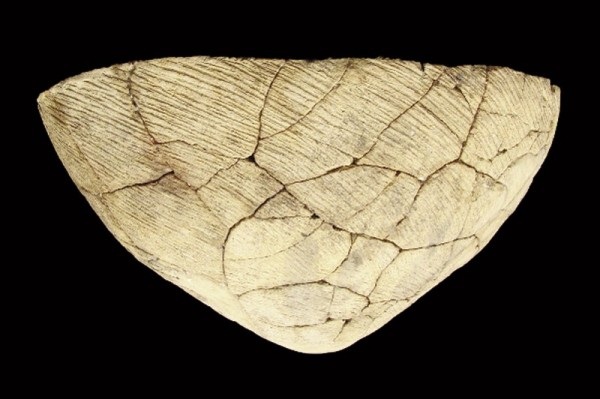
Native American vessel, Early Woodland period, ca. 900–300 B.C. Low-fired earthenware. (Courtesy, Joint Base-Anacostia Bolling [JBAB], Naval District Washington and Maryland Archaeology Laboratory, Jefferson Patterson Park.)

Dish fragments, Portugal, ca. 1660–1680. Tin-glazed earthenware. (Courtesy, Alexandria Archaeology Museum; photo, Robert Hunter.) These fragments of Portuguese majolica were found among piles of ship’s ballast that had been dumped beside the Carlyle-Dalton Wharf.
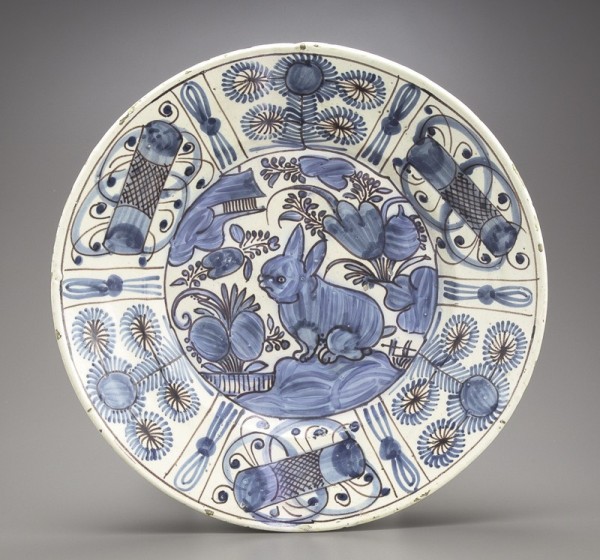
Dish, Portugal, ca. 1660–1680. Tin-glazed earthenware. D. 14 5/8". (Private collection; photo, Gavin Ashworth.) An example of the type of Portuguese dish represented by the fragments illustrated in fig. 8.

Lidded cooking pot, Rouen, France, ca. 1740–1790. Tin-glazed earthenware. D. 11". (Courtesy, Alexandria Archaeology Museum; photo, Robert Hunter.) Known as the Rouen Plain type of faïence brune, this ware is typically associated with French-occupied sites in North America.
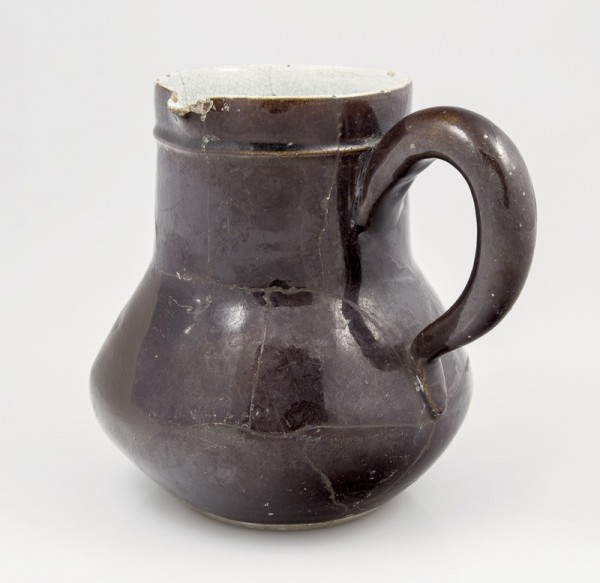
Pitcher, Rouen, France, ca. 1740–1790. Tin-glazed earthenware. H. 6". (Courtesy, Alexandria Archaeology Museum; photo, Robert Hunter.)
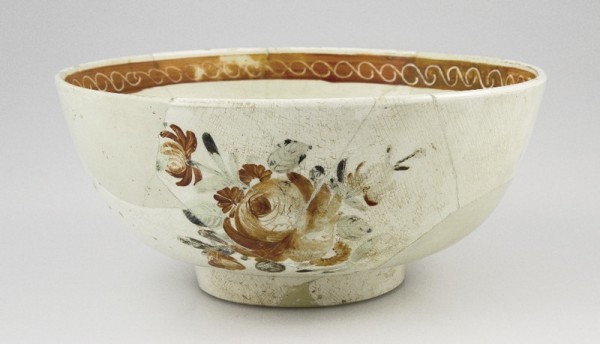
Punchbowl, probably Staffordshire, England, ca. 1770–1780. Creamware. D. 7". (Courtesy, Alexandria Archaeology Museum; photo, Robert Hunter.) Decorated with a polychome rose-and-floral pattern and verse. Found at Arell’s Tavern, this bowl would have held a quart of punch. Inscribed on interior bottom: “Thus Happy with / My Bowl & Friend / May I in pleasure / Every evening spend.”
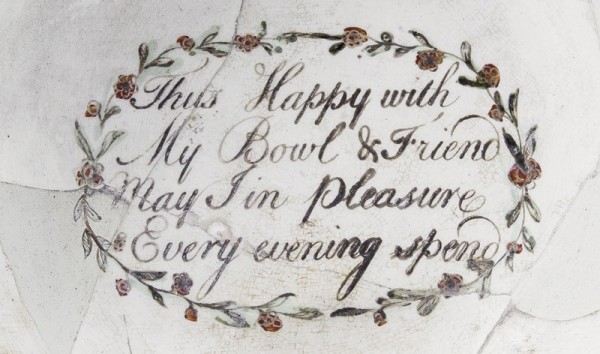
Detail of the verse inside the bowl illustrated in fig. 12.

Punch bowls, Wood & Caldwell, Burslem, Staffordshire, England, ca. 1795–1815. D. (left) 9 1/2", D. (right) 11 1/2". (Courtesy, Alexandria Archaeology Museum; photo, Robert Hunter.) Recovered from McKnight’s Tavern, these large bowls would have held a half-gallon and gallon of punch, respectively.

Details of the rim designs on the punch bowls illustrated in fig. 14.

Details of the interior designs on the punch bowls illustrated in fig. 14.

Pan, Henry Piercy, Alexandria, Virginia, ca. 1792–1796. Slipware. D. 12 3/4". (Courtesy, Alexandria Archaeology Museum; photo, Gavin Ashworth.)
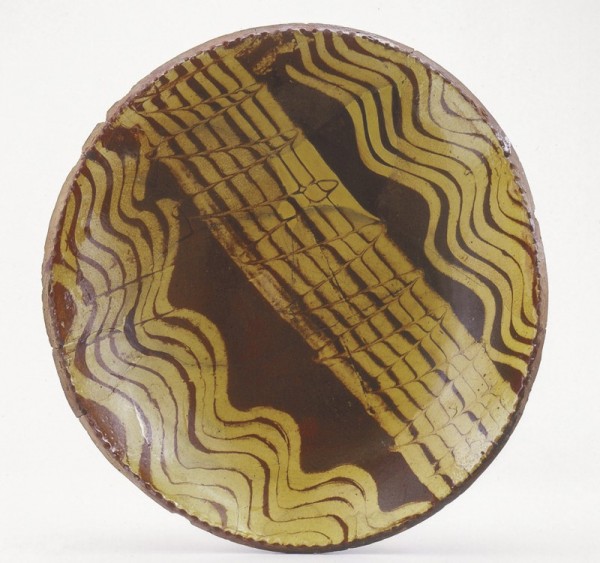
Dish, Henry Piercy, Alexandria, Virginia, ca. 1792–1796. Slipware. D. 13". (Courtesy, Alexandria Archaeology Museum; photo, Gavin Ashworth.)
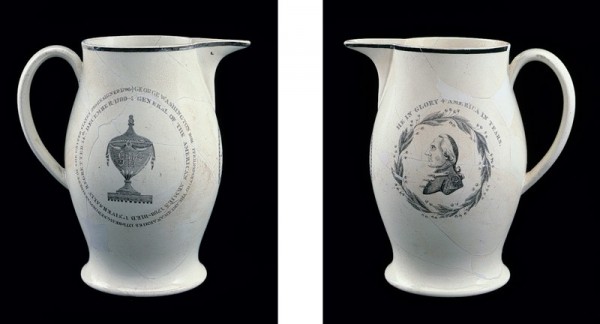
Pitcher, attributed to the Herculaneum Pottery, Liverpool, England, ca. 1800. Creamware. H. 8 1/2". (Courtesy, Alexandria Archaeology Museum; photo, Gavin Ashworth.) This black-rimmed mourning pitcher depicts Washington in profile surrounded by a wreath above which are the words “HE IN GLORY • AMERICA IN TEARS.” On the reverse is an urn with the initials GW and the words “GEORGE WASHINGTON BORN FEB. 11, 1732 / GEN’L OF THE AMERICAN ARMIES 1775 / RESIGNED 1785 / PRESIDENT OF THE UNITED STATES 1789 / RESIGNED 1796 / GENERAL OF THE AMERICAN ARMIES 1798 / DIED UNIVERSALLY REGRETTED 14TH DECEMBER 1799.” Under the spout are the words “A MAN / without example / A PATRIOT / without reproach.”

Detail of the mourning pitcher illustrated in fig. 19.

Chamber pot, attributed to Ferrybridge & Co., Yorkshire, England, ca. 1796–1801. Creamware. D. 8 1/4". Marks: stamped “WEDGWOOD” and “3” (Courtesy, Alexandria Archaeology Museum; photo, Robert Hunter.) Banded and sponged. Two of these pots were found together in the same privy, at an apothecary shop, where they were deposited around 1800–1820 along with eight plain creamware chamber pots.
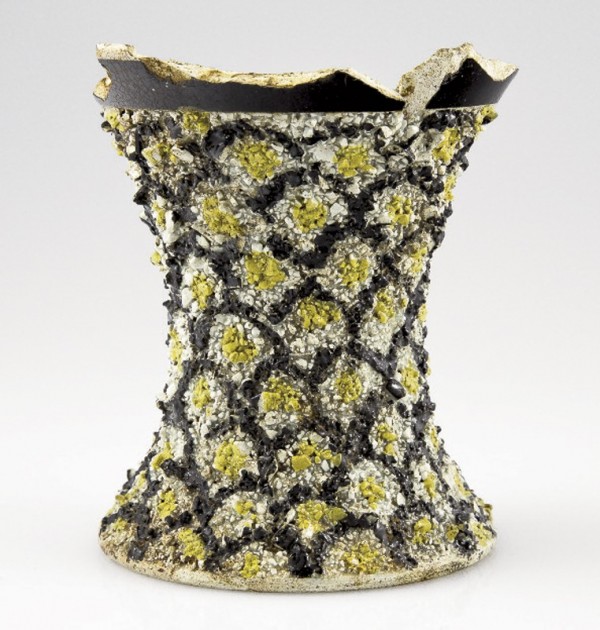
Spill vase, probably Yorkshire, England, ca. 1820. Pearlware. H. 3 3/4". (Courtesy, Alexandria Archaeology Museum; photo, Robert Hunter.) Found in a privy probably associated with Gadsby’s Tavern.

Child’s mug, probably Staffordshire, England, ca. 1820–1850. Whiteware. H. 2 1/2". (Courtesy, Alexandria Archeology Museum; photo, Robert Hunter.) Crudely applied transfer prints depict a shipwreck with “Franklin Maxims”: “Many a little makes a mickle. Beware of little expense”; “A small leak will sink a great ship”; on the reverse, maxims for people performing chores: “Industry needs not wish and he that lives upon hope will die fasting”; “There are no gains without pins [pains] then help hands for I have no lands.” From Benjamin Franklin’s Poor Richard’s Almanac, first printed in 1732.
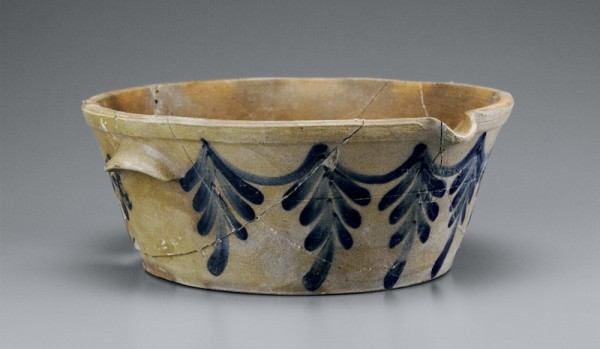
Milk pan, Benedict Milburn, Alexandria, Virginia, ca. 1831–1847. Salt-glazed stoneware, brushed cobalt. D. 10". Capacity: 1 gallon. Mark: impressed “H.C.SMITH / ALEXA / D.C” (Courtesy, Alexandria Archaeology Museum; photo, Gavin Ashworth.) The milk pan was discarded in a privy at 106 South St. Asaph Street in the second half of the nineteenth century.

Jar, Benedict Milburn, Alexandria, Virginia, ca. 1847–1861. Salt-glazed stoneware, slip-trailed cobalt. H. 14 1/2". Mark: impressed “B.C.MILBURN / ALEXA” (Courtesy, Alexandria Archaeology Museum; photo, Gavin Ashworth.) This elaborately decorated jar was found in excavations at a nineteenth-century free-black neighborhood at Alfred and South Columbus Streets.
